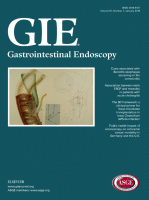Thosani N, Goodman A, Manfredi M, Navaneethan U, Parsi MA, Smith ZL, Sullivan SA, Banerjee S, Maple JT
J Gastrointest Endosc. 2017; 86(6):931-48.
BACKGROUND
GERD is one of the most common GI diseases, accounting for 7 million annual outpatient visits in the United States.1 Lifestyle modification and medical therapy, including acid-suppressive medications, are first-line treatments for GERD.2,3 In approximately 30% to 40% of patients with GERD, medical therapy provides only partial relief of symptoms.4 Laparoscopic anti-reflux surgery remains an option for patients with GERD, but only approximately 1% of all patients with GERD opt for surgical intervention.5 To address this GERD treatment gap, minimally invasive endoscopic anti-reflux devices have been developed, which allow endoscopic fundoplication or reduction in lower esophageal sphincter (LES) compliance.
Endoscopic anti-reflux devices are intended to target patients with GERD with mild gastroesophageal junction (GEJ) defects. These devices do not alter the anatomy of the esophagus, GEJ, or stomach and, thus, should not be considered as alternatives to surgical fundoplication for patients with significant anatomic abnormalities including large hiatal or paraesophageal hernias. Use of these devices has not been systematically evaluated in patients with active erosive esophagitis, Barrett’s esophagus, esophageal motility disorders, or hiatal hernias >2 cm in length. Limited data exist regarding use of these devices to treat patients with nonerosive reflux disease and laryngopharyngeal reflux disease. This document focuses on endoscopic anti-reflux devices to treat patients with GERD.
Although many endoscopic anti-reflux devices have undergone testing in bench models, animal models, and human trials, only a few are available currently in the United States for clinical use. The currently available U.S. Food and Drug Administration (FDA) approved devices for the endoscopic treatment of GERD are: transoral incisionless fundoplication (TIF) (EsophyX device; EndoGastric Solutions, Redmond, Wash, USA), Medigus Ultrasonic Surgical Endostapler (MUSE) (Medigus Ltd, Omer, Israel), and Stretta (Mederi Therapeutics, Greenwich, Conn, USA). Several previously developed endoscopic anti-reflux devices including the EndoCinch device (CR Bard, Inc, Murray Hill, NJ, USA), Endoscopic Suture device (Wilson-Cook, Winston-Salem, NC, USA), Endoscopic Plication System (Plicator; NDO Surgical, Inc, Mansfield, Mass, USA), Enteryx (Boston Scientific Corp, Boston, Mass, USA), and Gatekeeper reflux repair system (Medtronic Inc, Minneapolis, Minn, USA) are no longer marketed because of safety concerns and lack of efficacy.
Link to open-access PDF file: Thosani N et al; J Gastrointest Endosc. 2017; 86(6):931-48.


